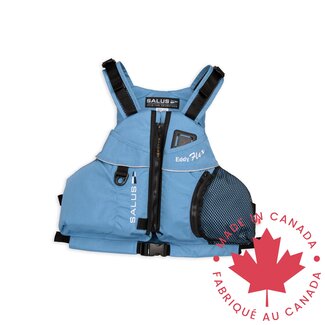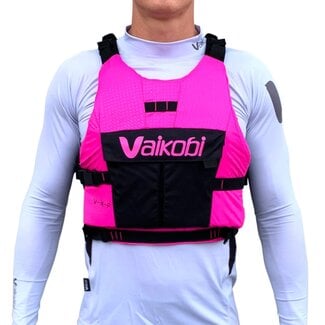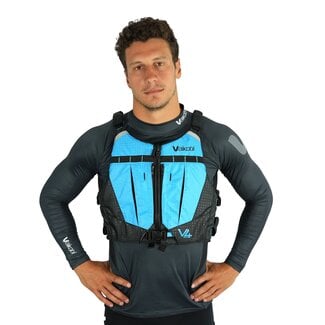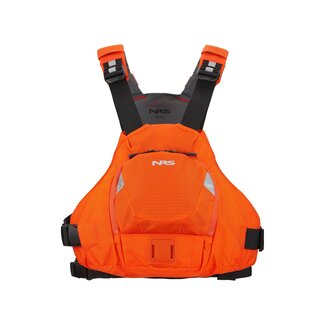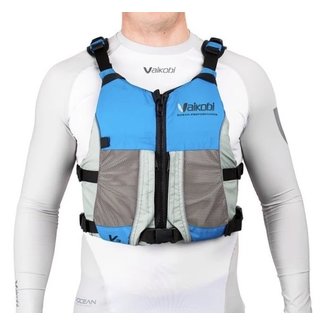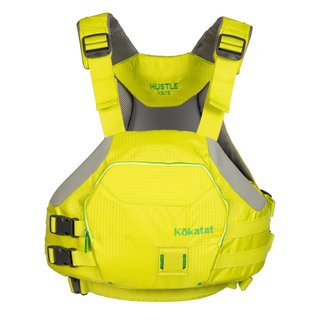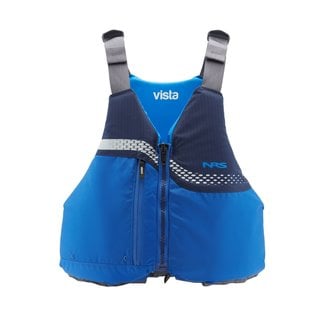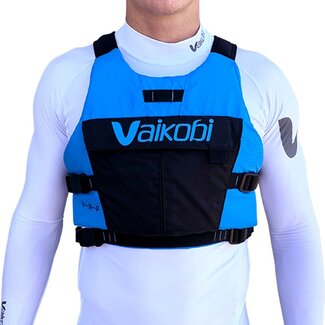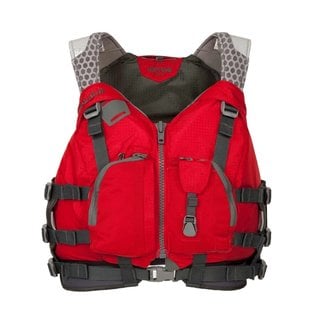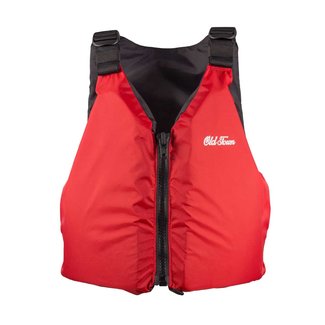PFDs (Personal Floatation Device) - Life Jackets
We've got a great selection of PFDs for all paddle sports and other water activities. A PFD is an essential, and legally required, piece of safety equipment when venturing out on the water, whether you're kayaking on the ocean, paddle boarding on lakes, or floating down a river. A PFD (personal floatation device) provides additional buoyancy to help keep you afloat in the water. Most people can swim just fine, but in an emergency situation, swimming and keeping yourself above the water's surface can be very challenging.
Are PFDs and Life Jackets the Same?
While they are similar, it is important to note that PFDs and life jackets (life vests) are not the same and have different safety standards and intended uses. PFDs are designed with comfort, mobility, and practicality in mind, so they're shaped to better fit the body and not inhibit your range of motion, and some models feature pockets, lash points, and tow/rescue systems. Life jackets are designed purely to keep you afloat in an emergency situation. They typically have greater buoyancy and include a large, buoyant collar, designed to help you roll face up and keep your head out of the water.
How to Choose a PFD
PFDs vary greatly in design, features, and type of buoyancy, so how do you decide which one to buy? Foam or inflatable? Standard or rescue? Low profile or high buoyancy? Here are a few different examples of paddle craft and paddling environments and which PFDs are best suited. Most importantly, the best PFD for you is the one you will actually wear! A PFD does you no good if you're not wearing it.
Ocean Kayak PFDs
If you're a fair weather paddler just cruising around local bays and inlets, then you don't necessarily need much. Just something with adequate floatation. The NRS Vista or Old Town Universal Outfitter may be all you need. These are no frills PFDs with broad fit ranges designed to fulfil basic needs. If you're more into touring and long-haul expeditions, you will want something with additional features, such as extra buoyancy, better shaping and fit, and more pockets and lash points. The Salus Ungava and Kokatat Neptune are well equipped for longer journeys and can both be equipped with an optional tow belt (sold separetely).
Whitewater Kayak PFDs
River kayakers will need a PFD designed more specifically for that environment. Lots of buoyancy, big pockets, lash points, and maybe even a rescue harness. The NRS Ninja and Kokatat Hustle are great options for getting into white water, but if you are planning on getting into big dynamic water, you should look at rescue PFDs such as the NRS Ninja Pro and NRS Zen.
Stand Up Paddle Board PFDs
The most popular style of PFD for paddle boarding is an inflatable belt pack. These are super low profile and comfortable, you'll hardly know it's there! We stock manual-inflation PFDs, which means you have to pull the tab to inflate it, they will not inflate on their own if you end up in the water. The reason we like manual-inflation PFDs is that you will likely end up in the water fairly frequently, either on purpose or by accident, and the CO2 cannister needs to be replaced every time it is deployed. The Mustang Minimalist Belt Pack or Onyx M-24 Belt Pack are great options. Standard PFDs are also suitable for paddle boarding, but most people opt for the belt pack.
Surfski and Outrigger Canoe PFDs
Surfski and outrigger canoe paddlers typically want the most comfortable and low profile PFD available as they're working hard a lot of the time. Full range of motion for the arms and torso are important for an effective paddle stroke, and if you need to remount your boat, you don't want a bulky PFD that will make that already challenging process even harder. The Vaikobi V3 and VXP PFDs are super light weight, low profile, and comfortable. They also feature high visibility colours and a large pocket on the back for a hydration system. However, these Vaikobi PFDs are not Transport Canada certified, so if you are part of a club you may need a PFD that is certified. The Mustang Khimera is perfect in this scenario. This PFD is a hybrid foam/inflatable PFD. The foam is very low profile, similar to the Vaikobi PFDs, but the Khimera also has an inflatable portion to add buoyancy in an emergency situation.
Dragon Boat PFDs
Some dragon boat clubs have rules requiring Transport Canada certified PFDs, so the Vaikobi PFDs are not typically recommended, as they are not Transport Canada certified. However, the Salus Eddy Flex and Mustang Khimera are excellent options.
Children's PFDs
A PFD that fits properly is important for everyone, but even more so for children. We have PFDs to fit kids of all sizes, from infants to teens. Take a look at our range of children's PFDs
Dog PFDs
That's right, we even have PFDs for your furry friends! Dogs are usually great swimmers, but even they can benefit from additional buoyancy on paddling adventures. Take a look at our dog PFDs
What Size PFD Do I Need?
Sizing can vary from brand to brand, but usually it's based on your weight or your chest measurements. There will be a size chart on each product page, so refer to that for proper sizing. If there is no size option then that particular PFD is one size fits all. Just adjust the straps to be comfortably snug and hit the water.
How Do I Use My New PFD?
This seems like it should be simple enough, and for the most part it is, but there are some important steps to help maximise your enjoyment and safety on the water.
For vest PFDs, you first want to loosen all the straps and then put it on. Next, be sure the zipper and/or clips are all securely fastened. Some vests have a zipper up the front and a clip on the waist band. Other vests have two or more clips on the side instead of a zipper. Starting with the lowest strap, tighten the waist straps until snug, but still comfortable. The PFD should not ride up if you pull up firmly on your shoulder straps. Then tighten the should straps. These do not need to be all that snug, just take out the excess. Over-tightened shoulder straps will inhibit your range of motion for paddling.
Belt packs just go around your waist like a fanny pack. You can wear it with the pack at the back or front, but most people have it at the back for comfort and so it doesn't get in the way when remounting. Most of the time when you fall (or jump) into the water, you won't need to deploy the PDF. You can just get back on your craft. In an emergency situation, bring the pack to the front and open it up. Unfold the vest and put it over your head and then pull the tab to inflate. You can inflate the vest before you put it on, but it's easier to put it on first. There is a tube to blow more air in if needed. Once you're off the water you can deflate the vest and pack it back up. You will need to purchase a new CO2 cannister to re-arm your belt pack before you use it again. The necessary canister is usually different for each model of PFD. If your CO2 cannister is corroded, replace it immediately as it may not function correctly. To prevent this from happening you should unpack and rinse your inflatable PFD after every use and leave it to dry before repacking.
Whistle
A whistle is a necessary add-on for your PFD. Being able to signal for help is very important, and a whistle is far louder than your voice. The sound of a whistle also carries far better. The Fox 40 Classic is the standard go-to whistle for paddle sports.


